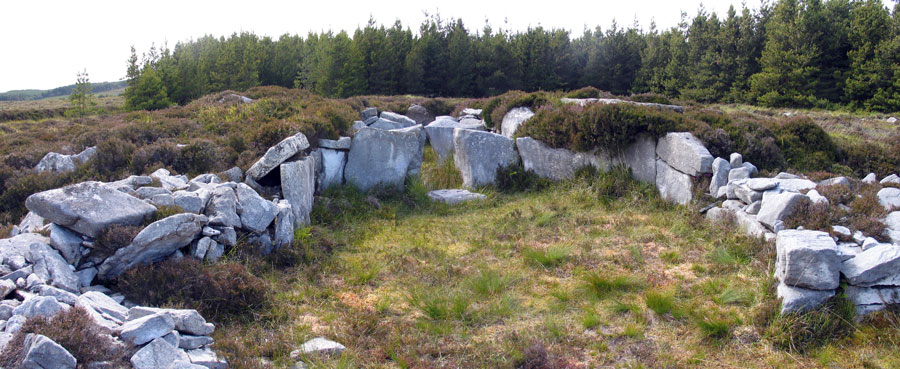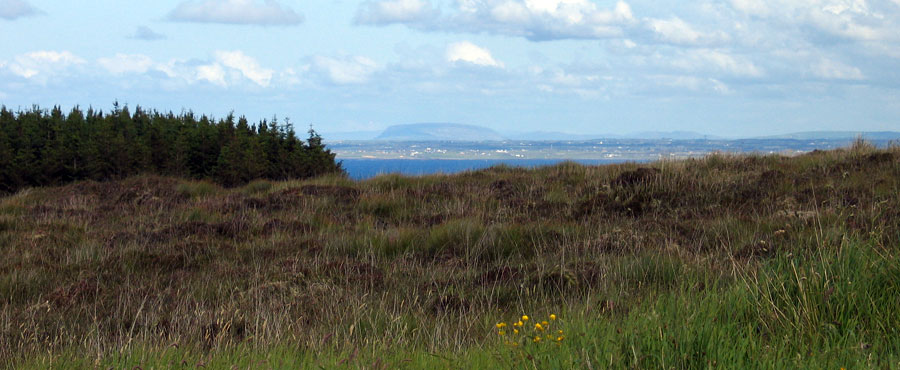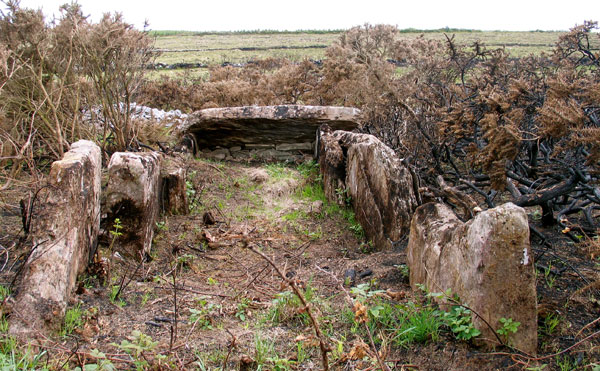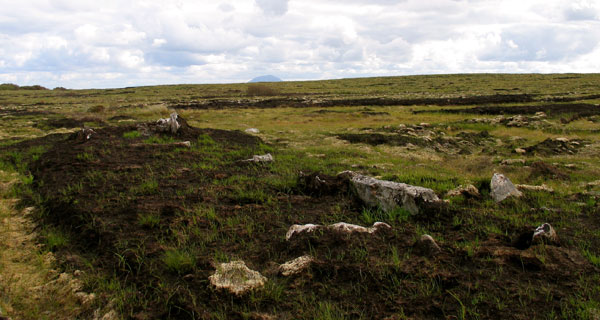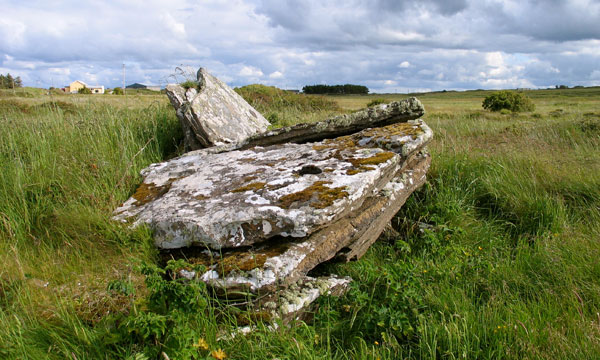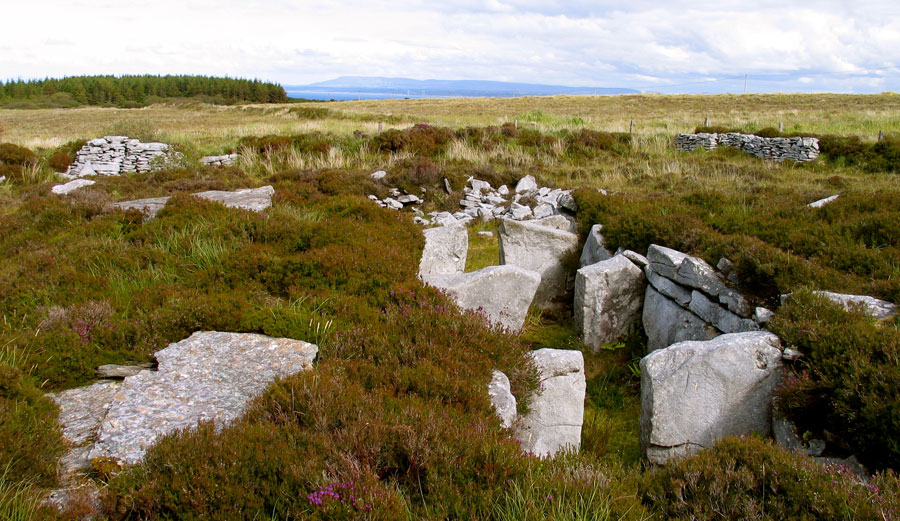Rathlackan court cairn
The Rathlackan monuments, three court-cairns and a collapsed wedge, are found on the north coast of Mayo with fine panoramic views over Lackan strand and Killala Bay. The main site is a well preserved court-cairn set within an enclosure within a system of field walls similar to those found at the nearby Ceide Fields. The Rathlackan megalith is located in a beautiful site, with sweeping views across the sea, sky and landscape.
The monument at Rathlackan is in good condition because it was completely buried in and preserved by the bog. At some stage in the past, the huge capstone slipped and tipped upright, sticking out from the bog. The site was excavated in the late 1990's by Gretta Byrne, manager of the Ceide Fields visitor centre.
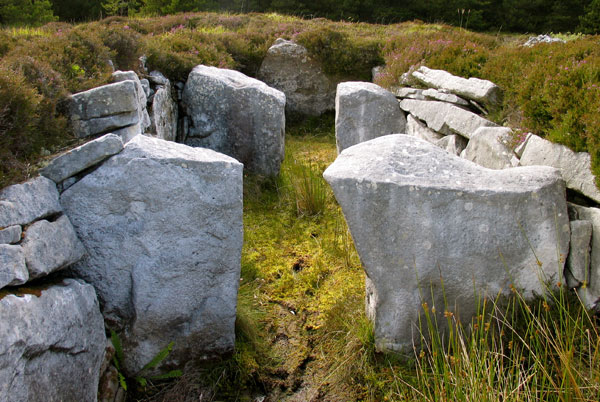
The Rathlackan monument has a fine court built from drystone chunks of sandstone. A pair of well matched jambs lead into a well-preserved chamber of three compartments. The enormous roofing flags have been lifted off the chamber and lie close by. The ground is very wet and spongy: the chamber is full of sphagnum moss. The site was excavated by Gretta Byrne, who is the head guide at the Ceide Fields.
Excavation report
Details from the 1992 excavations are available online. Here is a section from Excavations.ie.
An area at the north-east corner of the cairn was excavated in order to establish the nature of the cairn and possible court and also to examine the relationship of the eastern end of the enclosure to the tomb.
When the peat was removed a jumbled mass of flattish sandstones was revealed. When the collapsed stones were gradually removed the original cairn structure became apparent, revealing a portion of the entrance and court, a frontal facade from the court to the north edge of the cairn and part of the north kerb (see plan).
A 3.4m long, gently curving, dry-walled section of the court was uncovered. It survived to a maximum height of over 0.9m and was formed by large recumbent sandstone blocks, the largest of which was 1.3m long and 0.38m high, adjacent to the entrance. These were all much thicker and heavier than the stones used in the frontal facade which was also of dry-walled construction and survived up to 0.7m high with up to 5 courses. This was 5m long and extended in a north-south direction, giving a slightly convex front to the cairn. Outside the cairn, both in front of the facade and in the court, the substantial amount of collapsed stones indicated the cairn originally stood much higher.
The northern side of the cairn had a straight dry-walled kerb, but only the basal course of stones, which were well set into the ground, survived. The remainder had been removed in antiquity, prior to the peat growth. One of the larger kerb stones was leaning outwards, apparently pushed out by the pressure of cairn stones behind it, perhaps indicating that this part of the cairn had already collapsed before the stones were removed rather than being deliberately demolished.
The enclosure wall extended northwards from the northeast corner of the cairn but it was very poorly defined, consisting only of loosely and randomly placed stones with no definable edge, although this may have been a gap in the wall. It was not possible so far to determine whether the enclosure here was built before or after the major cairn collapse or indeed whether the cairn material was robbed to build the wall.
In the south-east corner of the cutting a rough paving covered an area of about 2.8m by 1.6m, laid on some cairn collapse, and consisting of flat slabs in a roughly level surface and the hollows filled with rightly packed rounded stones less than 0.1 m in size. This may indicate activity here later than the collapse or displacement of the cairn which also seems to be evidenced by a large quantity of finds throughout the collapsed cairn material immediately around the court entrance.

